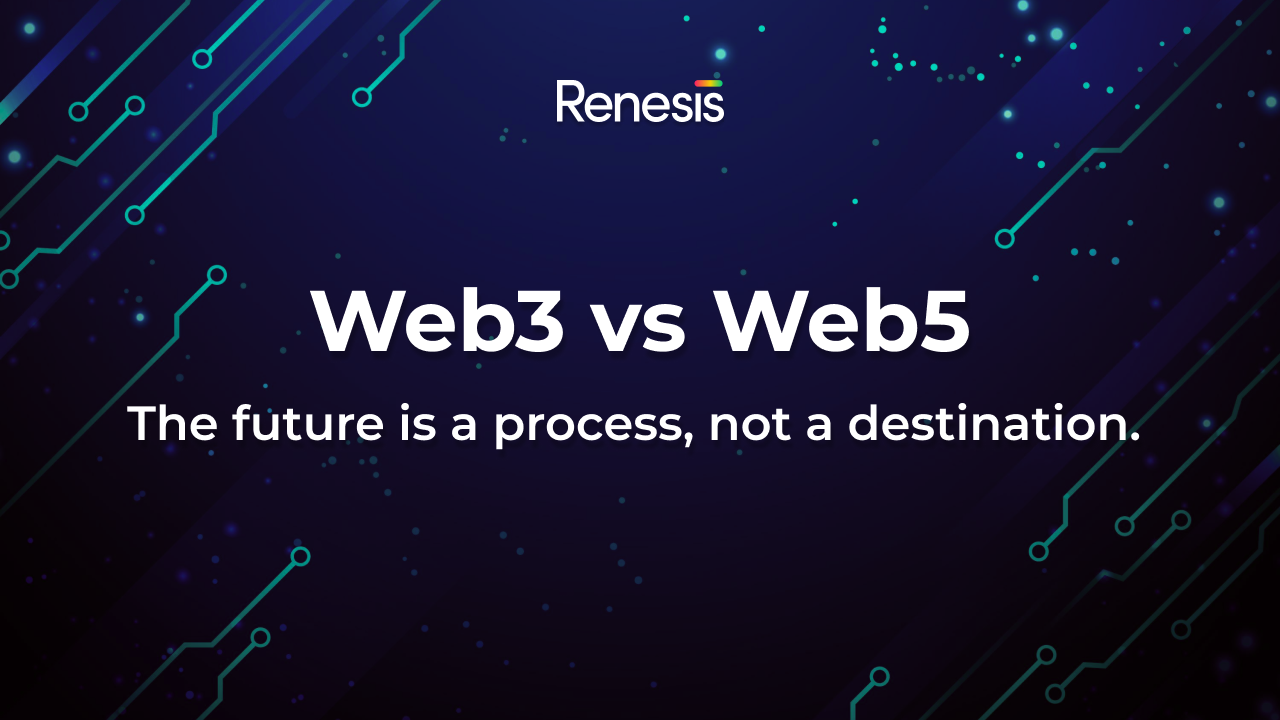Web3 vs Web5: The future is a process, not a destination.
In the fast-paced development of the Internet, new technologies and developments are continually emerging that influence the development of mankind. The Internet has come a long way from Web 1.0 to Web 4.0, and a lot has changed in its more than 50 years of existence. What is Web5, where is Web4, and what is Block subsidiary TBD’s recent initiative to create a new layer of decentralization on the Web?
Twitter’s co-founder Jack Dorsey announced the launch of Web5 on June 10 through TBD, a subsidiary of Block. Is Web 5 the next step after Web 1, 2, and 3?
In Dorsey’s view, Web3 doesn’t really get the data back to the user. Because most decentralized applications are run on the centralized infrastructure of Infura, a blockchain development platform, or Alchemy, which provides crypto infrastructure services.
This model relies on open networks for decentralized applications (DApps), and no entity could collect data from users without their consent, nor limit or censor their access.
This means that Web3’s mission is to create a “decentralized and fair internet where users control their own data, identity, and destiny.”
In other words, users’ data is owned and controlled by venture capitalists and centralized API infrastructure companies controlled by Internet companies like Google and Facebook.
According to the Dorsey team, Web5 is a collection of Web2 and Web3, that is, Web2 plus Web3 = Web5.
To make this article easier to understand, let’s quickly summarize the stages of web evolution.
From Web1 to Web2
We began with what we now call Web1. During this stage, the primary websites, portals, and online services had been developed, and customers could only browse information, without interacting directly. Due to one-way communication on the internet, Web1 was also known as the “Static Web,”
Web2
Web2 was steadily born with the emergence and proliferation of social networks and their purposes such as blogs, boards, and podcasts that made participative communication possible.
Due to the growth of these new instruments, customers started communicating with one another and sharing content. This is when consumers became content owners, creating new interactions and processes, which is why Web 2 has been dubbed “Collaborative Web.”.
What is the history of Web3?
Like other phases of the web, it’s difficult to pinpoint when Web3 began. The reason for this is that web development is a process and there is no set start date.
The term Web3 was coined by Gavin Wood in 2014, but many believe it emerged around 2006.
It is uncertain how the next phase of the Web will look, but it must be called Web3.
There is no single creator of Web3, it is being built and developed by various individuals and organizations in cooperation.
But, by and large, the people who build Web3 are also the ones who are leading the way in smart contract platforms on blockchains like Ethereum, EOS, and TRON.
The main goal of Web3 is to solve the biggest problem of Web2: the collection of personal data over private networks, which allows for surveillance capitalism. Internet’s future lies in correcting this deficiency.
As a result, Web3’s main innovation is being a decentralized network, not controlled by one entity, formed by a consensus mechanism platform that everyone can trust.
It allows decentralized applications (DApps) to be built on the open web, where no entity can collect data without user consent, nor can it restrict or censor access.
Web5
Tim Berners-Lee, the inventor of the Web, gave a TED Talk in 2009 in which he called Web5 “an open, connected, intelligent Web”. Web).
This network is also called the symbiotic network, it will be interconnected, where we can communicate with it (just like a personal assistant).
This network will be very powerful and run entirely on (emotional) interactions between humans and computers. With the use of neurotechnology, many people will become accustomed to interacting on a daily basis.
Accordingly, Tim Berners’ Web5 allows users to interact with their emotions or touch content based on facial recognition.
In Dorsey’s view, Web5’s goals can be achieved by using the Bitcoin network instead of Ethereum and other smart contract-based blockchains popular in Web3.
With Web5, developers can write decentralized web applications by using decentralized identities, verifiable credentials, and decentralized web nodes, regaining ownership and control of identities and data.
Thus, Web5 stores only identities on the blockchain, everything else is stored on user-run nodes.
Web5 will replace these centralized servers with decentralized Web nodes to ensure that user data won’t fall into the wrong hands in the first place as opposed to Web2, where progressive Web applications cache user-related information and then send it to centralized servers as a whole.
Web3 or Web5, the goal is to ensure internet security for users on the internet. Users will benefit from more initiatives focusing on the decentralized web. Eventually, these initiatives will bring together all the technical, financial, and human resources necessary to develop a decentralized web.
Therefore, this ideal future exists as a process, not as a destination.










